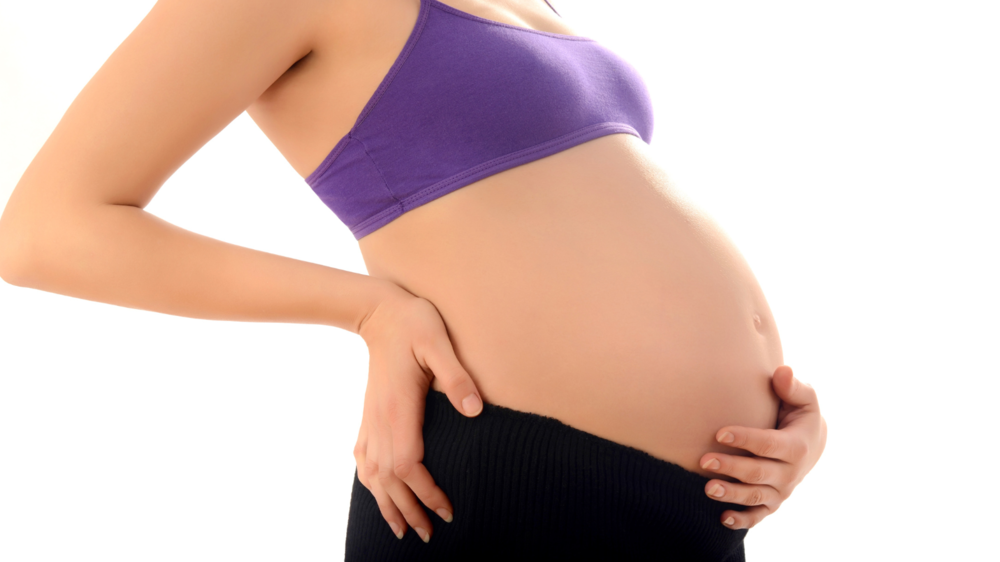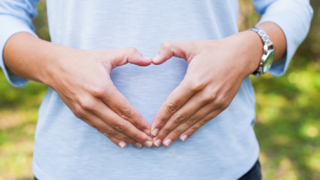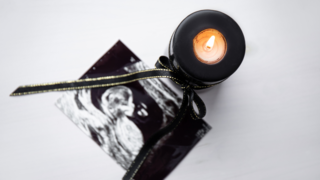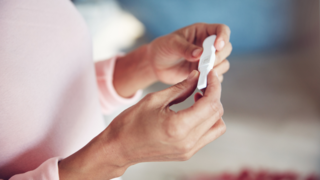One unique shape is the B belly, which has a distinct appearance and may raise questions in your mind. However, you must remember that a B belly is completely normal and doesn’t indicate any health issues. Understanding that your body is going through a range of changes can help ease any concerns.
What is a B Belly?
A B belly during pregnancy refers to a bump that appears to have a crease or band across the middle. This crease divides it into a top and bottom half, resembling the shape of a capital letter “B.” This is different from the more common D belly, which looks like a capital letter “D” and has a smooth, rounded shape without a dividing feature.Some people also call this a double-bellied pregnancy due to its divided appearance. The B belly is a normal variation in how pregnancy bumps present and is not something to be alarmed about, though it may differ from your expectations.
It's important to note that the top of the B shape is not your breasts, as this would make nearly every pregnant woman have a B belly.
Causes of a B Belly
Several factors contribute to the development of a B belly during pregnancy. These factors are related to your body’s unique characteristics and how it adapts to pregnancy. The main causes are:- Your body’s weight and size: Your body weight before pregnancy plays a major role. According to the World Health Organisation (WHO), individuals with a body mass index (BMI) of 25 or above are considered overweight, while a BMI of 30 or higher indicates obesity. Individuals who start pregnancy with a higher BMI are more likely to develop a B belly, though it’s not guaranteed.
- Natural belly shape: If you carry weight primarily in your belly rather than your hips or thighs before pregnancy, you’re more likely to have a B belly.
- Previous pregnancies: If you have been pregnant before, your abdominal muscles may be looser, and your belly may expand more quickly in subsequent pregnancies. This is especially true if your body hasn’t fully recovered from the previous one. These changes can lead to a B belly shape.
- Fascial health: The fascia, the connective tissue beneath your skin, helps shape your belly during pregnancy. If the fascia is damaged due to factors like poor posture, dehydration, a sedentary lifestyle, an unbalanced diet, stress, or injured muscles, it may contribute to a B belly. Previous pregnancies or the natural structure of your abdomen can also affect fascial health, leading to a divided appearance.
- Diastasis recti: This condition occurs when the right and left abdominal muscles separate due to increased intra-abdominal pressure from the growing foetus. As the abdomen expands, the tissues stretch, and the gap between the muscles widens, which can create a B belly shape. Diastasis recti is common during pregnancy. For some individuals, it resolves naturally after birth as the abdominal muscles regain strength.
Health Concerns Associated with a B Belly
A B belly is not a cause for concern, and you should not be alarmed. But if your B belly is influenced by a higher BMI, there may be additional health risks to monitor during pregnancy.Some of the health concerns are:
- Gestational diabetes: Individuals with a higher BMI are at greater risk of developing gestational diabetes. This condition requires management through diet or medication. Gestational diabetes can also increase the chances of needing a caesarean delivery.
- Preeclampsia: High blood pressure, or preeclampsia, is more common in individuals who are overweight. This condition can cause swelling and damage to vital organs like the liver and kidneys.
- Miscarriage and stillbirth: A higher BMI can increase the risk of miscarriage or stillbirth, making regular prenatal care very important.
- Back pain: The extra weight and altered posture from a B belly or higher BMI can contribute to back pain during pregnancy.
- Complications for the baby: Babies born to individuals with a higher BMI may face risks such as a larger size at birth. This can lead to delivery complications or preterm delivery, which may cause issues with organs like the heart, lungs, brain, or gastrointestinal system.
Emotional Challenges of a B Belly
Having a B belly can sometimes lead to emotional struggles, especially if it’s not the shape you expected. You might feel self-conscious or disappointed if your bump doesn’t match the idealised round bump often depicted in the media.These feelings are normal, and you’re not alone in experiencing them. If others make insensitive comments about your belly, you can rely on strategies like seeking support from friends or peers. Try focusing on the incredible work your body is doing to grow your baby.
Celebrating pregnancy milestones and finding joy in your own journey can boost your confidence. It also helps you feel better emotionally.
Supporting Your Body with a B Belly
A B belly doesn’t require any special medical intervention, but there are ways to support your comfort and confidence during pregnancy. Take a look at some practical tips:- Stay hydrated and active: To support fascial health, drink plenty of water and add regular stretching, yoga, or light cardio into your routine, as approved by your doctor. These habits can help maintain the flexibility and strength of your connective tissues.
- Use supportive clothing: Belly bands can provide extra support for your bump, help alleviate back pain, and smooth out the B belly shape for a more comfortable fit. Maternity leggings are also a good option to enhance your comfort.
- Choose flattering maternity clothes: Finding maternity clothing that feels comfortable and complements your body can make a big difference in how you feel about your bump.
How a B Belly May Change During Pregnancy
Your B belly may not stay the same throughout your pregnancy. As your body adjusts and weight shifts, the shape of your bump can change. Some individuals find that the B shape becomes less pronounced or even transforms into a D shape as the pregnancy progresses from the first to the third trimester.If your B belly persists, rest assured that it’s a natural shape and not something you need to fix.
Different Types of Pregnancy Bump Shapes
Your baby bump can take on different shapes beyond the commonly discussed B belly and D belly. Other shapes can appear due to factors like your body type, muscle structure, and how your baby is positioned.- High belly: This shape occurs when your bump appears to sit higher on your abdomen, closer to your ribcage.
- Low belly: A low belly sits closer to your pelvis and gives the appearance that your bump is hanging lower.
- Wide belly: A wide belly spreads across your torso, making your bump appear broader rather than protruding forward.
- Pointed belly: This shape is characterised by a bump that protrudes sharply.
- Asymmetrical belly: An asymmetrical belly appears uneven, with one side of the bump more pronounced than the other.
Having a B belly might not be what you pictured for your pregnancy, but it’s a normal part of your journey. Your body is working hard to nurture and grow your baby, and that’s something to celebrate. Many individuals experience a B belly, and it’s just one of the many ways a pregnancy can look. Remember that your baby bump is temporary, but the joy of welcoming your little one will last a lifetime!
FAQs on What is a B Belly During Pregnancy? Everything You Need to Know
- What is a B belly?
A B belly during pregnancy refers to a bump that appears to have a crease or band across the middle, dividing it into a top and bottom half. This shape resembles the letter "B" and is a normal variation in pregnancy bumps. - What causes a B belly during pregnancy?
It can be caused by factors such as body weight, natural belly shape, previous pregnancies, fascial health, and diastasis recti. - Is a B belly during pregnancy a cause for concern?
A B belly is completely normal and not a sign of any health issues. However, if it's linked to a higher BMI, it may come with some health risks, such as gestational diabetes or preeclampsia. These conditions require regular monitoring.






